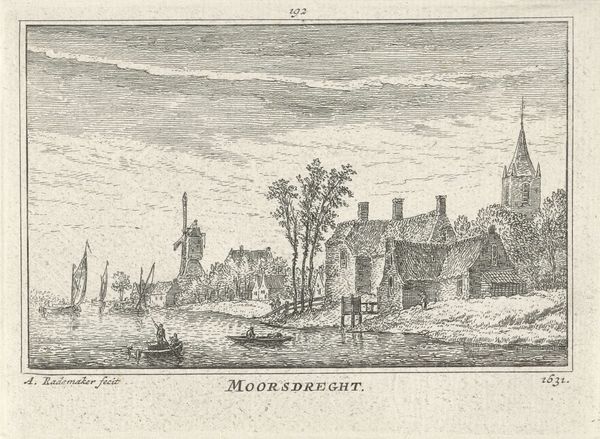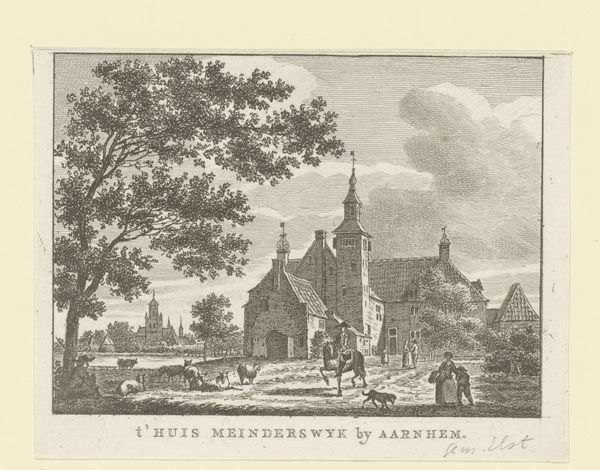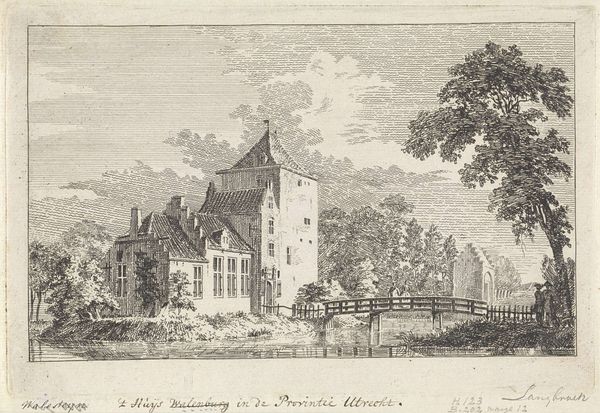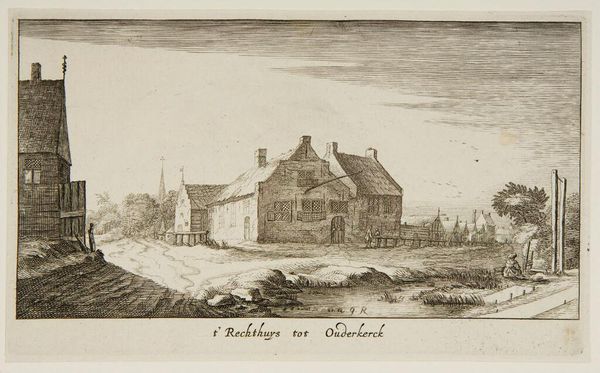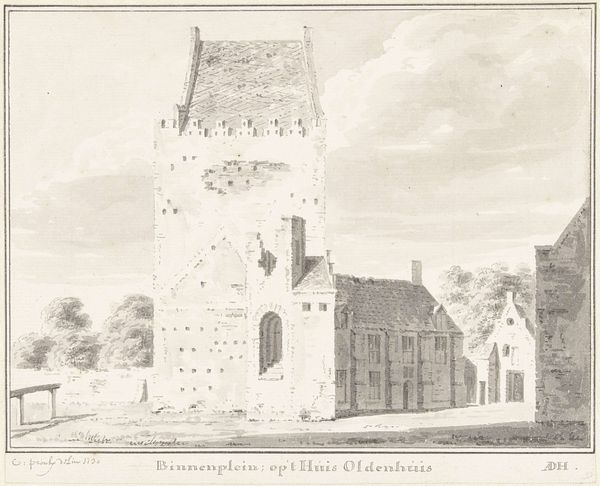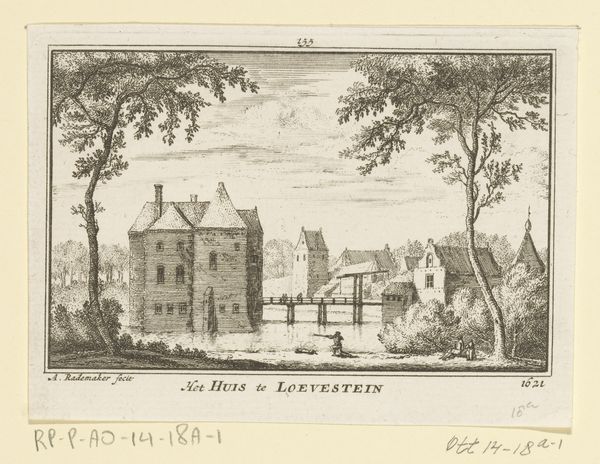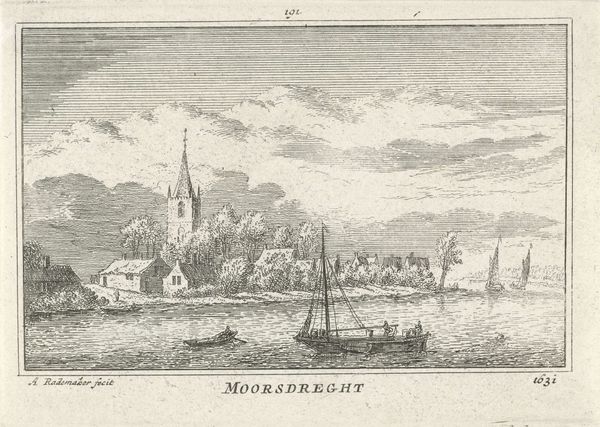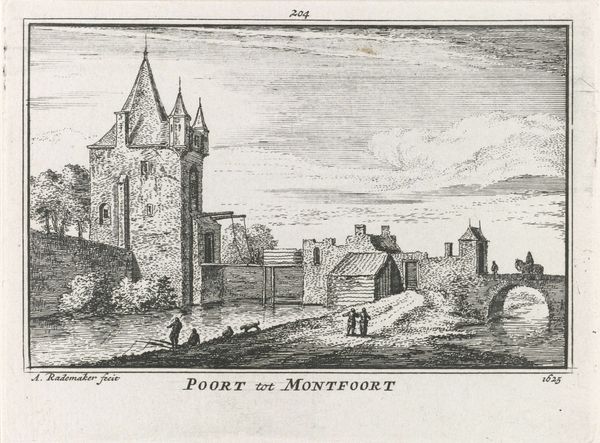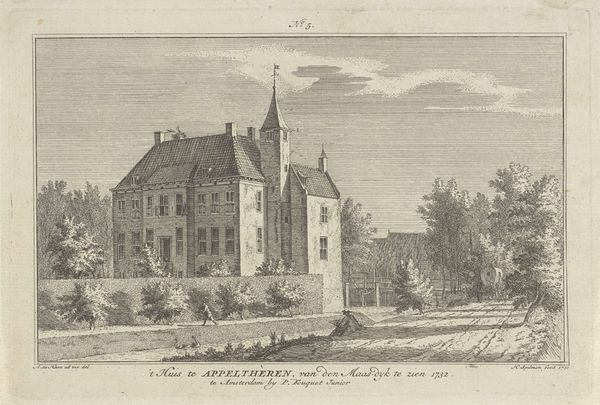
#
aged paper
#
quirky sketch
#
dog
#
old engraving style
#
sketch book
#
personal sketchbook
#
sketchwork
#
pen-ink sketch
#
pen work
#
sketchbook drawing
#
initial sketch
Dimensions: height 80 mm, width 115 mm
Copyright: Rijks Museum: Open Domain
Editor: So, this is Abraham Rademaker’s "Kasteel Middelaar," created sometime between 1727 and 1733. It’s currently held at the Rijksmuseum. I'm immediately struck by the details; it reminds me of architectural renderings. What's your take on it? What stories do you think are contained within these sketched lines? Curator: For me, this image pulses with the enduring symbolic power of the castle. Think of the castle as more than a structure, it is an idea, almost. From fairy tales to political strategy, it evokes notions of protection, power, and even isolation. Notice the detail placed on the castle's height and fortification, doesn't this imagery broadcast control? Editor: I see that now! I was so caught up in the architectural details that I missed the symbolic weight. Do the figures outside add another layer to that symbolism? Curator: Absolutely. Who are they? A lord surveying his land with his companion and loyal dog? Each detail serves as a signifier within the cultural memory of status. Consider also the landscape itself. How does the artist depict the relationship between the castle and its environment? Does it dominate or blend? Editor: It feels balanced, not overly dominant, maybe even coexisting. It makes you think about the people in it too. Curator: Exactly! It hints at the delicate balance of power, of humanity's place within the broader tapestry of the world. Each line is a testament to the stories embedded within these types of symbols and compositions. What do you make of the body of water, itself? Editor: Good point, all of this is useful to remember when observing any other castle depictions in art. This helps unlock what is intended or implied in that cultural representation. Curator: Precisely! Recognizing these recurring visual motifs and how artists employ them unlocks a much deeper engagement with their work and time.
Comments
No comments
Be the first to comment and join the conversation on the ultimate creative platform.
